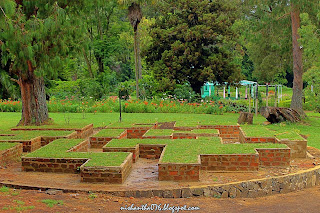Rich with
sea like irrigation reservoirs, magnificent monuments reflecting workmanship in
ancient Buddhist culture, the city of Polonnaruwa is full of graceful
sceneries. It is the second kingdom of ancient Sri Lanka. In addition,
Angagammadilla, Dimbulagala, Somawathi Chethiya, are picturesque sites.
By
capturing the king Parakrama Pandu and removing his eyes alive and torturing
him to death, the invasive South Indian king Kalinga Magha destroyed and burnt
the mediaeval capital to the ground. Many ancient books were dragged out, piled up
and burnt. The Portuguese who came after 1505 too looted, what was left in the
city.
Polonnaruwa
was known to have had human settlements, long before Prince Vijaya landed on
the shores of the island.
Kings of
Polonnaruwa
Vijayabahu
1 (Vijayaba) 1055
– 1110
Jayabahu 1110
– 1111
Wickramabahu 1111
– 1132
Gajabahu 1132
– 1153
Parakramabahu (The Great) 1153
– 1186
Vijayabahu
11 1186
– 1187
Nissankamallala 1187
– 1196
Wickramabahu 1196
Chodaganga 1196
– 1197
Leelawathi
queen (Queen of Parakramabahu) 1197
– 1200
Sahassamallala 1200
– 1202
Kalyanawathi
(Queen of Nissankamallala) 1202
– 1208
Dharmashoka 1208
– 1209
Anikanga
Mahadipada 1209
Queen
Leelawathi 1209
– 1210
Lokeshwara 1210
– 1211
Queen
Leelawathi 1211
– 1212
Parakrama
Pandu 1212
– 1215
Kalinga
Magha (Kalinga Vijayabahu) 1215
– 1236
The King
Parakramabahu was an erudite person, an expert statesman, and great ruler of
mankind and a warrior, with an extra ordinary energy and discernment, and also
a brilliant physician. He established the peace and harmony in the country. It
was a golden era of architecture and many of his architectural creations have
not yet identified.
The
Vatadage (Circular Relic House)
Vatadage is
one of the most remarkable architectural monuments to be seen in Polonnaruwa.
Siva Devale
The South
Indian architecture Cola style kovil built in the 13th century.
Parakramasamudraya
(Sea of Parakrama) is the unique creation of king Parakramabahu the Great.









